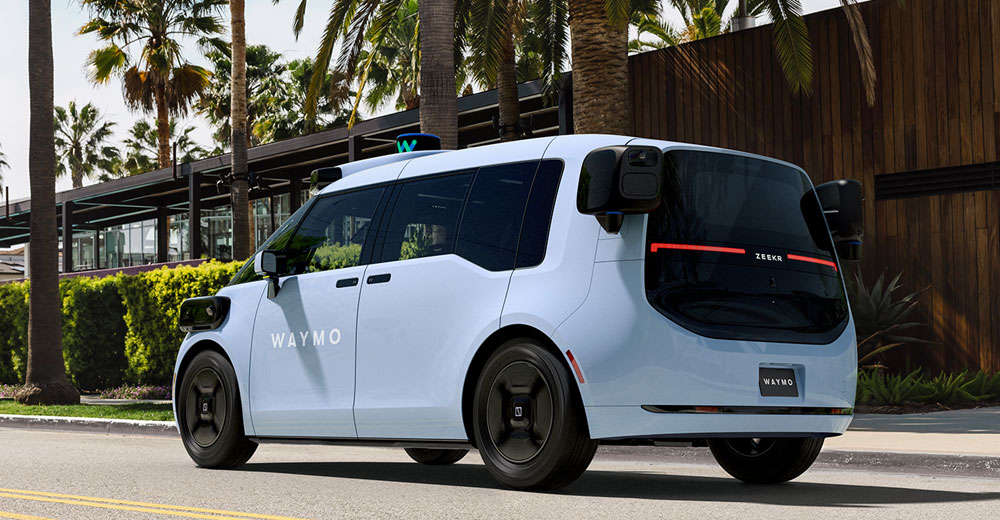
Waymo Builds Arizona Factory To Grow Robotaxi Fleet
Waymo, Alphabet’s autonomous vehicle division, announced a major expansion plan on Monday that marks a pivotal moment in the evolution of robotaxi technology. The company is set to build a massive 239,000-square-foot facility in Mesa, Arizona, through a partnership with Magna International, a Canadian automotive supplier. This new facility will retrofit over 2,000 Jaguar I-Pace electric SUVs with Waymo’s cutting-edge autonomous driving system — the 6th-generation Waymo Driver — to support expansion into three new metro markets: Atlanta, Miami, and Washington, D.C., starting in 2026.
Currently operating in Phoenix, San Francisco, Los Angeles, and Austin, Waymo’s expansion signifies its intent to dominate the growing autonomous ride-hailing market. The Mesa facility is designed with flexibility in mind. It will not only enable large-scale retrofitting of vehicles but also introduce automated assembly processes that allow for multiple vehicle platforms to be developed simultaneously. One of the first new vehicles slated for this rollout is the Zeekr RT, purpose-built for autonomous ride-hailing, which will launch later this year featuring the 6th-generation Waymo Driver.
Waymo emphasized that when the plant reaches full capacity, it will be capable of producing tens of thousands of fully autonomous vehicles annually. This manufacturing milestone underscores the company’s confidence in both the safety and commercial viability of its technology. Chris Bonelli, Waymo’s Product Communications Manager, expressed that this investment aligns with the company’s commitment to scaling its Waymo One ride-hailing service and preparing for wider deployment.
Industry analysts see this as a major leap forward. Kathleen Rizk of J.D. Power highlighted the announcement as a sign of Waymo’s commitment to pushing the boundaries of autonomous vehicle deployment, especially while competitors scale back due to regulatory and technical hurdles. Edward Sanchez of TechInsights reinforced this view, noting that the move cements Waymo’s leadership position in the U.S. autonomous ride-hailing space and affirms its expansion goals.
Seth Goldstein of Morningstar believes this expansion is good news not only for Waymo but for the autonomous vehicle industry as a whole. By building a dedicated robotaxi facility, Waymo could accelerate public adoption and broader market confidence in autonomous transportation. While Waymo’s progress is commendable, experts caution that it doesn’t necessarily reflect the state of the broader AV industry. Sam Abuelsamid of Telemetry noted that although this move signals Waymo’s internal confidence, other players — such as Amazon-owned Zoox — are still ramping up their own purpose-built robotaxi operations, with deployments underway in San Francisco, Seattle, and Las Vegas.
Abuelsamid added that Waymo leads in North America due to its superior automated driving systems and backend infrastructure, along with solid relationships with local authorities and first responders. While other companies like Tesla have teased their own autonomous services, there’s skepticism over their readiness. Tesla’s system is still considered Level 2 — meaning human oversight is mandatory — and there’s little evidence to suggest it can safely operate without driver intervention anytime soon.
Waymo’s edge also lies in its rider-first design approach. Its collaboration with Zeekr has yielded vehicles specifically tailored for autonomous ride-hailing — from spacious interiors to streamlined passenger interactions — distinguishing it from companies that simply retrofit conventional cars. Malik Ahmed Khan, a technology equity analyst at Morningstar, noted that Waymo is currently the only paid AV taxi service operating at scale, with over 250,000 rides per week. He emphasized the firm’s scalability and cost-efficiency, driven in part by its diversified vehicle partnerships.
Financially, Waymo benefits from the deep resources of its parent company, Alphabet, allowing it to weather the long and capital-intensive path to AV maturity. This gives it a clear advantage over smaller startups facing funding constraints. But despite strong backing and promising technical performance, the path to mainstream acceptance still runs through public perception — particularly concerns over safety and security.
Rizk referenced J.D. Power’s 2024 Robotaxi Experience Study, which found that 83% of consumers want hard safety data before using autonomous vehicles. This includes a desire for detailed statistics and a proven operational track record. Moreover, consumers are worried about privacy and cyber risks, with more than 80% seeking transparency about how companies are protecting these vehicles from potential hacking.
Even with Waymo’s significant investment and clear leadership position, the transition to widespread AV adoption remains gradual. Regional regulatory hurdles complicate rollouts, especially in the U.S., where approval is handled state by state. By contrast, centralized regulatory systems in countries like China allow for swifter, nationwide deployments. The European Union is also working to harmonize regulations to enable cross-border AV operations, but challenges remain.
Market forecasts suggest that autonomous vehicles will become more prominent in the coming decade, with Morningstar projecting that AVs will account for 50% of all ride-hailing rides in the U.S. and Canada by 2035. The rollout is expected to mirror the early days of services like Uber and Lyft, expanding city by city. Goldstein noted that AVs will likely be cheaper than traditional ride-hailing, which will help drive adoption.
Despite optimism, Abuelsamid cautioned that even industry leaders like Waymo face high operational costs and utilization issues. Demand for robotaxis fluctuates throughout the day, making it hard to achieve profitability. He suggested that near-term commercial applications might be more viable in logistics — such as robo-shuttles, long-haul trucking, and middle-mile deliveries — where consistent demand can help offset high overheads.
Ultimately, Waymo’s expansion into Arizona represents a bold commitment to the future of autonomous transportation. It highlights both the immense promise of this technology and the complex realities of bringing it to scale. As regulators, consumers, and competitors continue to shape the market, Waymo’s continued investments show that it’s not just aiming to keep pace — it’s intent on leading the way.






